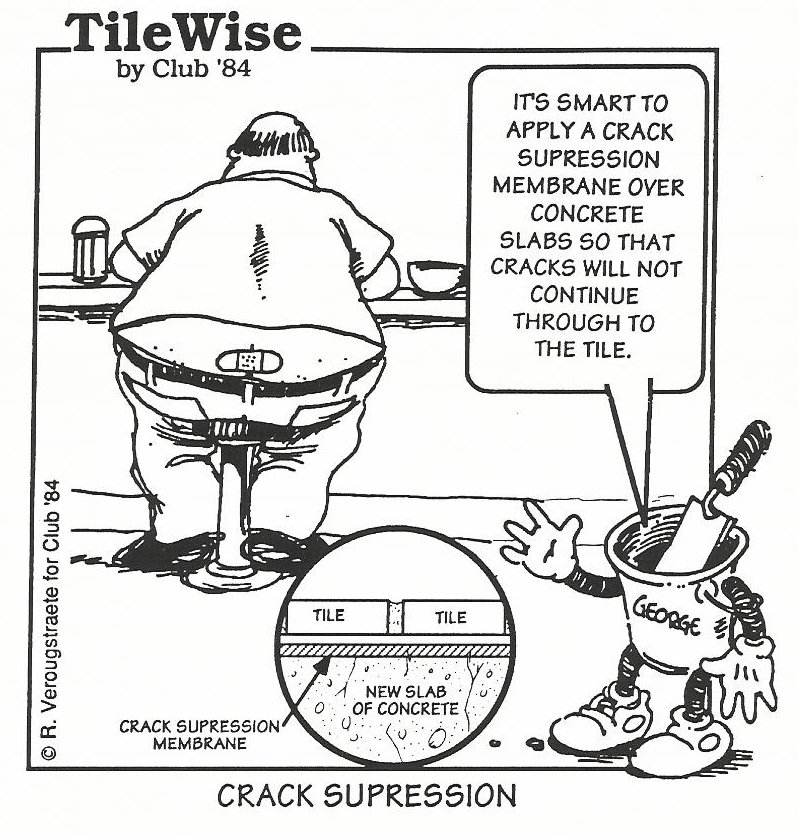Tile Tips
Crack Suppression
Industry standards state that tile cannot be installed over any cracks within a substrate. This includes concrete slabs, mortar beds, or plaster substrates. These are frequently the types of substrates in which we see shrinkage cracks. The difference between shrinkage cracks and structural cracks is that a shrinkage crack only moves horizontally while a structural crack moves vertically. If tile is installed over these cracks it can result in the tile cracking. Shrinkage cracks can be isolated by applying a crack isolation membrane over them, but structural cracks cannot be isolated or bridged over with with a crack isolation membrane. Structural cracks must first be repaired with epoxy and dowels.
If you isolate shrinkage cracks you must apply the crack isolation membrane over the cracks so that any tile that bridges those cracks is completely bonded to the membrane. You cannot have those bridging tiles bonded to the concrete substrate at all or they will be subjected to movement stresses. The rule-of-thumb is that the crack isolation membrane that is centered over the cracks should be about 3 times the width of the tile being used, which will typically be adequate. TCNA F125 Partial Crack Isolation Membrane installation detail states that the grout joints on either side of the tile that is bridging the crack should be filled with a traffic grade ASTM C920 sealant to allow the tile to move with the membrane without causing any cracking.
Of course if the substrate cracks after the tile has been installed then there is no way to prevent the tile from cracking. That’s why it’s a good idea to put a TCNA F125 Full Crack Isolation Membrane over the substrates at the beginning of a project. You should always give your clients the option to purchase this added protection if they want to pay for it. If they don’t opt for the added protection, then the installer can’t be responsible for any cracking that occurs later on.
Cracking can be avoided or minimized if substrates are installed correctly. Rebar should be installed in concrete about midway of the slab to minimize cracking. Control joints are installed in concrete to control where the concrete cracks. Wire reinforcement in mortar beds is supposed to be installed about midway of the mortar bed to minimize the chance of cracking. On our inspections we often find the wire reinforcement at the bottom of the mortar bed where it does no good! Using too much water in your mortar or making it too rich with cement can cause excessive cracking. Dry-pack mortars have less water and make the mortar bed stronger, resulting in less shrinkage and cracking. That’s why dry pack mortars are the best to use for floor applications. Properly moisture-curing the concrete or mortar bed can also minimize cracking.

